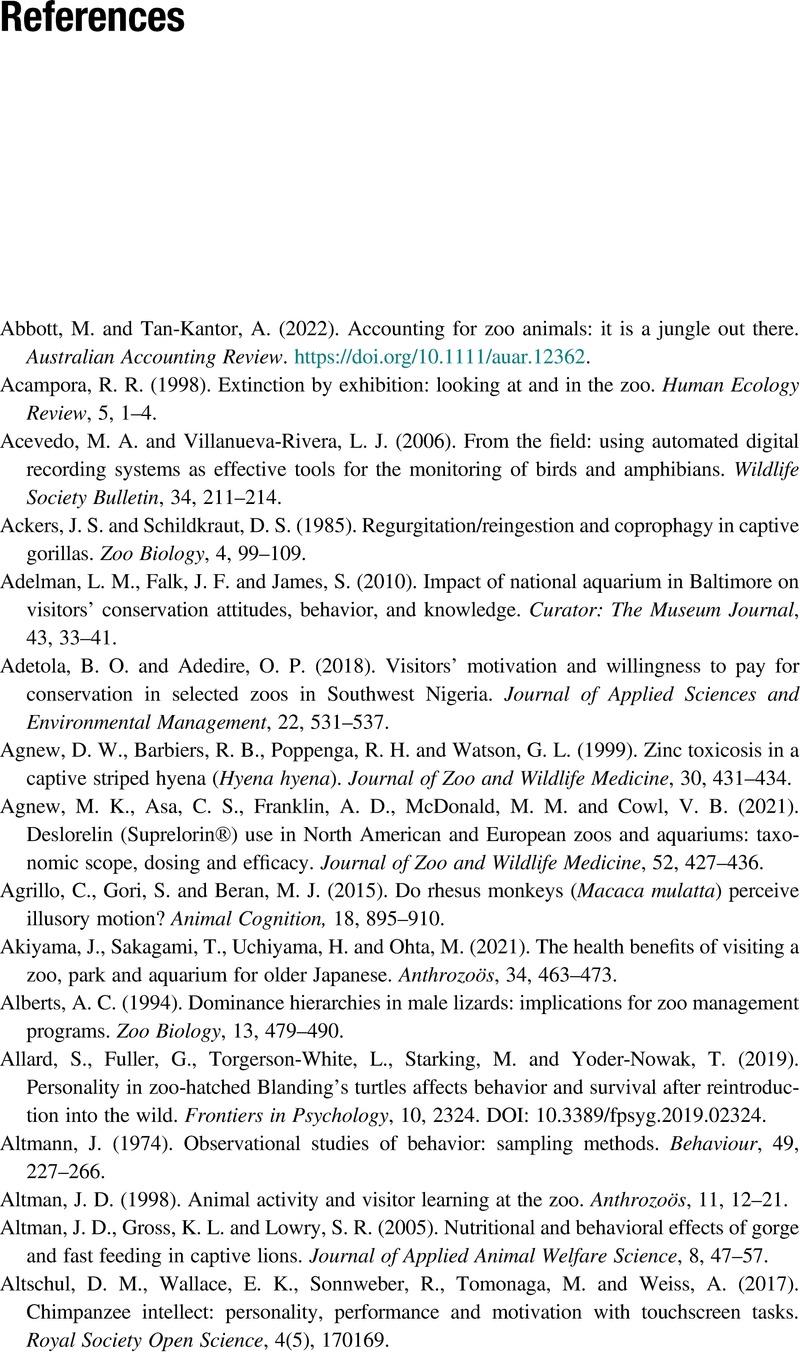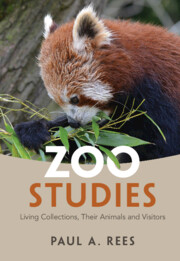Book contents
- Zoo Studies
- Zoo Studies
- Copyright page
- Dedication
- Contents
- Preface
- Acknowledgements
- Abbreviations
- 1 Zoos and Research
- 2 Defining Zoos, Their Culture and Visitors
- 3 Zoos and Education
- 4 Anthrozoology and Visitor Behaviour
- 5 Zoo Organisation and Regulation
- 6 Ethics, Zoos and Public Attitudes
- 7 The Contribution of Zoos to Zoology
- 8 Animals and Their Enclosures
- 9 Animal Welfare
- 10 Enrichment and Training
- 11 Conservation Breeding, Reproduction and Genetics
- 12 Restoration, Rehabilitation and In-Situ Conservation
- 13 Animal Nutrition and Conservation Medicine
- 14 The Past and Future of Zoos
- Bibliography
- References
- Subject Index
- Animal Species Index
- References
- Zoo Studies
- Zoo Studies
- Copyright page
- Dedication
- Contents
- Preface
- Acknowledgements
- Abbreviations
- 1 Zoos and Research
- 2 Defining Zoos, Their Culture and Visitors
- 3 Zoos and Education
- 4 Anthrozoology and Visitor Behaviour
- 5 Zoo Organisation and Regulation
- 6 Ethics, Zoos and Public Attitudes
- 7 The Contribution of Zoos to Zoology
- 8 Animals and Their Enclosures
- 9 Animal Welfare
- 10 Enrichment and Training
- 11 Conservation Breeding, Reproduction and Genetics
- 12 Restoration, Rehabilitation and In-Situ Conservation
- 13 Animal Nutrition and Conservation Medicine
- 14 The Past and Future of Zoos
- Bibliography
- References
- Subject Index
- Animal Species Index
- References
Summary

- Type
- Chapter
- Information
- Zoo StudiesLiving Collections, Their Animals and Visitors, pp. 369 - 440Publisher: Cambridge University PressPrint publication year: 2023



